Create a list of articles to read later. You will be able to access your list from any article in Discover.
You don't have any saved articles.
Ammonites are a group of extinct shelled cephalopods related to today's squids and octopuses. Most ammonites died out 66 million years ago, at the same time as dinosaurs.
Fossilised ammonite shells can be found all around the world, including on parts of Britain's coastline. But if you can't get to a beach to find some, why not start your own collection from home?
Watch the video above to find out how to make a fossil ammonite out of salt dough.
Read on for written instructions and some inspiration for the different types of ammonite you could make.
You will need:
1. Research ammonites and find your favourite species.
Ammonites came in a variety of shapes and sizes. Pay attention to features including shell shape, the presence of any ribs, and ornamentation such as spines or ribs.
You can find some examples of ammonites below for inspiration.
2. Preheat your oven to 120°C.
3. To make the salt dough, mix the flour and salt in a bowl.
Gradually add water until a dough comes together and you can form it into a smooth ball.

4. Gently roll the dough out into a long, tapered sausage. This is the main structure of the ammonite shell and is called the phragmocone.
5. To create ribs, wrap the string around the dough and pull gently to leave an indent. If you pull the string more tightly, you can form the more pronounced ribs that are seen in some species.
Pay attention to how far apart your favourite ammonite's ribs are spaced.

6. Gently roll or bend the phragmacone into the shape of your ammonite.
7. Add features, such as spines, to your ammonite by pinching, shaping or adding dough.

8. Transfer your ammonite to a baking tray lined with baking paper. Bake for three hours.
9. Let your ammonite cool completely. You can display your salt dough fossil or make more to hide in the garden and go on a fossil hunt.
Try to identify the species you've found from the unique shapes and features of their shells.

'Ammonite' can refer to ammonoids (animals in the class Ammonoidea) which first appeared about 450 million years ago.
The true ammonites (Ammonitida), a subgroup of ammonoids, lived during the Jurassic and Cretaceous Periods, from about 200 million years ago. Almost all ammonites died out 66 million years ago from the secondary effects of the asteroid that also wiped out the non-bird dinosaurs.
Ammonites started out in life with a tiny shell and built new living chambers onto it as they grew. Their growing shells commonly formed into a tightly wrapped spiral, but some ammonites had stranger shapes.
Look through the examples below to find your favourite type of ammonite and recreate it from salt dough.
Or find out more about ammonites and life in the ocean during the Jurassic Period.

Asteroceras obtusum
Asteroceras obtusum has the spiral shell and prominent ribs of the ammonites you may be familiar with.
This species lived during the Jurassic Period between 189-196 million years ago, although other species in the genus Asteroceras appeared in the Triassic from about 205.6 million years ago.

Scaphites whitfieldi © Ghedoghedo via Wikimedia Commons (CC BY-SA 4.0)
In their early growth stages, Scaphites were generally tightly coiled. But the shell spiralled less tightly as the animal reached adulthood, with the terminal part bending into more of a hook shape. Because they don't have a standard planispiral shape, they are known as heteromorphic ammonites.
Pictured above is Scaphites whitfieldi, where you can see tubercles, the bases of spines, across its shell. Some ammonites had spines for defence and others would have had ornamentation that may have served to strengthen their shells.

This Dactylioceras specimen is about 9.5cm in diameter
Around 180 million years ago in the Jurassic period, Dactylioceras lived all over the world. The fossils can be found in large clusters, which may indicate either mass mortality events or that they were very common ammonites.
The ribs of these ammonites are close together and lean forwards slightly.

Aegocrioceras quadratus
Species in the genus Aegocrioceras have loosely spiralling shells with whorls that don't touch each other, and prominent ribs. This genus has been found in northern Europe and lived in the Early Cretaceous.

Nipponites mirabilis has alternating ox-bow bends
Nipponites mirabilis are some of the most unusual-looking ammonites. Another heteromorphic species, fossils have been found in rocks that date to the Late Cretaceous in Japan.
The unusual alternating U-shaped bends of N. mirabilis mean there are a lot of questions about how it would have lived, but some scientists have suggested that these ammonites would have had a low-energy lifestyle and slowly pirouetted in the water to capture planktonic prey.

Two species of Hamites ammonites
Hamites ammonites lived in the Cretaceous Period. These were heteromorphic animals with uncoiled shells. Some Hamites began life with a very small spiral shell, but typically grew into either a long hook or a shape resembling a paper clip.
Little is known about how these ammonites lived, but it is thought they would have been slow swimmers due to the drag caused by their open shells.

Nostroceras
While this may look a bit like a snail, it's actually a Nostroceras ammonite.
Snail shells have one big chamber that the animal lives in, whereas if you were to look inside this shell you would find multiple internal chambers, which are characteristic of ammonites.

Kosmoceras phaeinum
This ammonite has been preserved squashed. It also displays sexual dimorphism, where the male and female of the same species look different, like we see in peacocks or lions.
We know that this specimen is a male from the long prongs sticking out near the opening of the shell (the aperture). These prongs are known as lappets and are thought to have been used by the male to help hold onto the female during mating, a bit like shark claspers.

Maorites densicostatus
This specimen of Maorites densicostatus was found in Antarctica.
Other species in this genus have also been found in South America. The first recorded ammonite ever found in South America was a Maorites, found by Charles Darwin in Chile.

Hildoceras bifrons with a carved snake's head
Before science had an answer, ammonite fossils were a bit of a mystery. Because they looked like coiled snakes, in England they were often called snakestones. This example of Hildoceras bifrons, found in Yorkshire, has a carved snake's head.
H. bifrons lived about 175 million years ago, during the Jurassic Period. They had deep ribs in its shell and could be 2.4-17.5 centimetres in diameter. They have been found in eastern England, as well as mainland Europe and North Africa.
Find out about snakestones and the folklore from around the world that was inspired by ammonites.
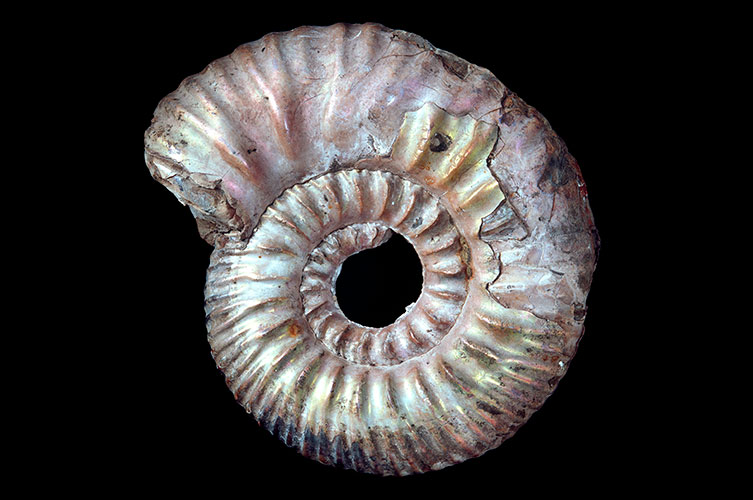
Rasenia uralensi
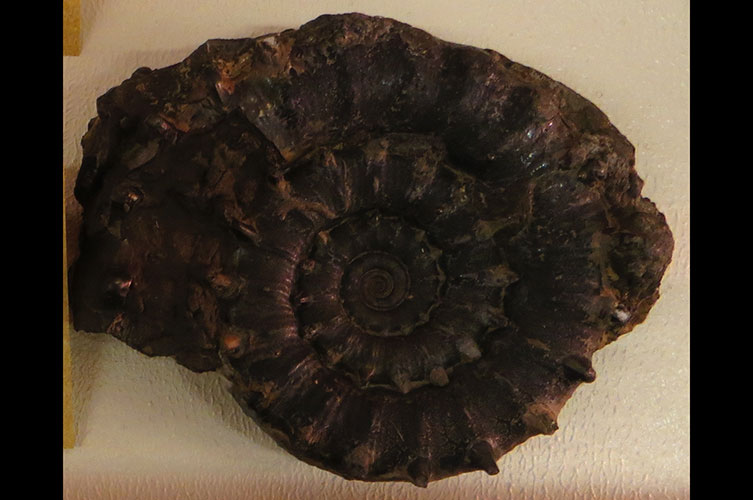
Eteoderoceras armatum © Ghedoghedo/ Wikimedia Commons (CC BY-SA 4.0)
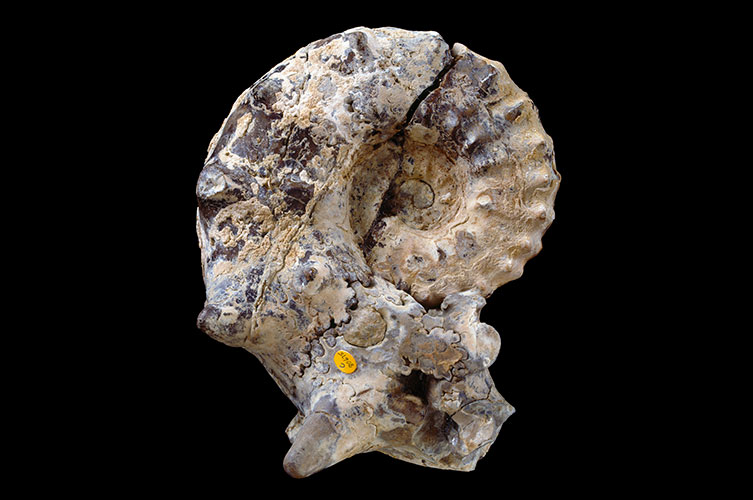
Collignoceras woolgari
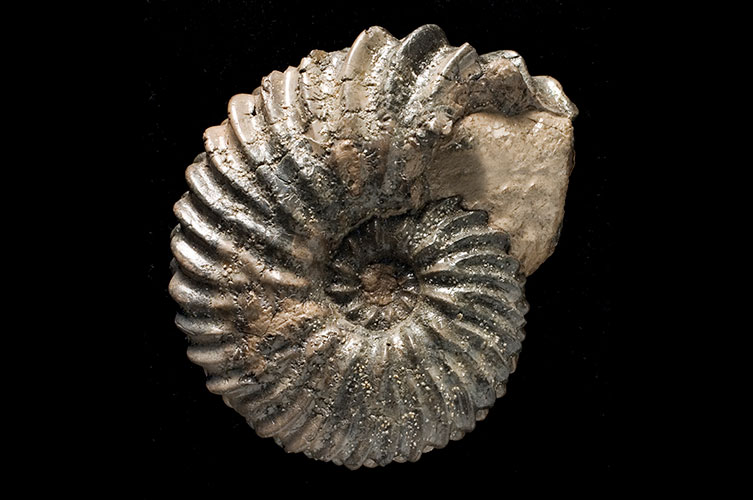
Hoplites sp.
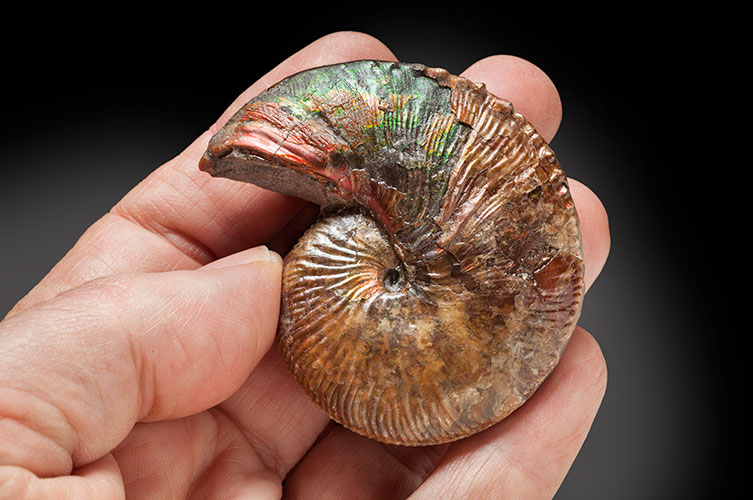
Hoploscaphites comprimus
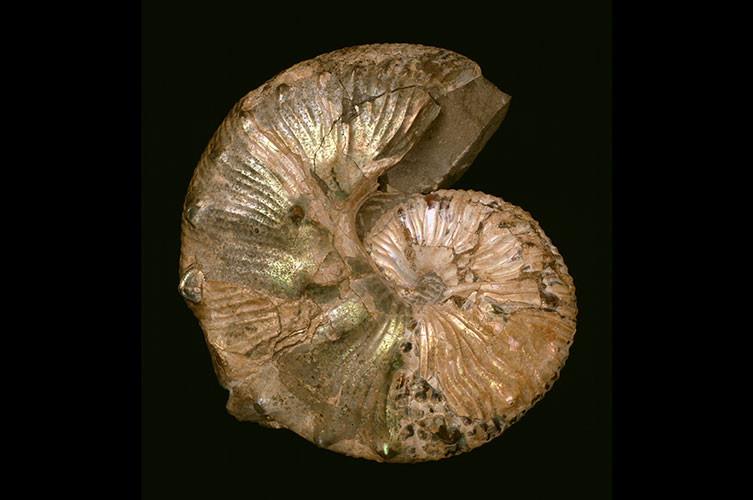
Scaphites nodosus